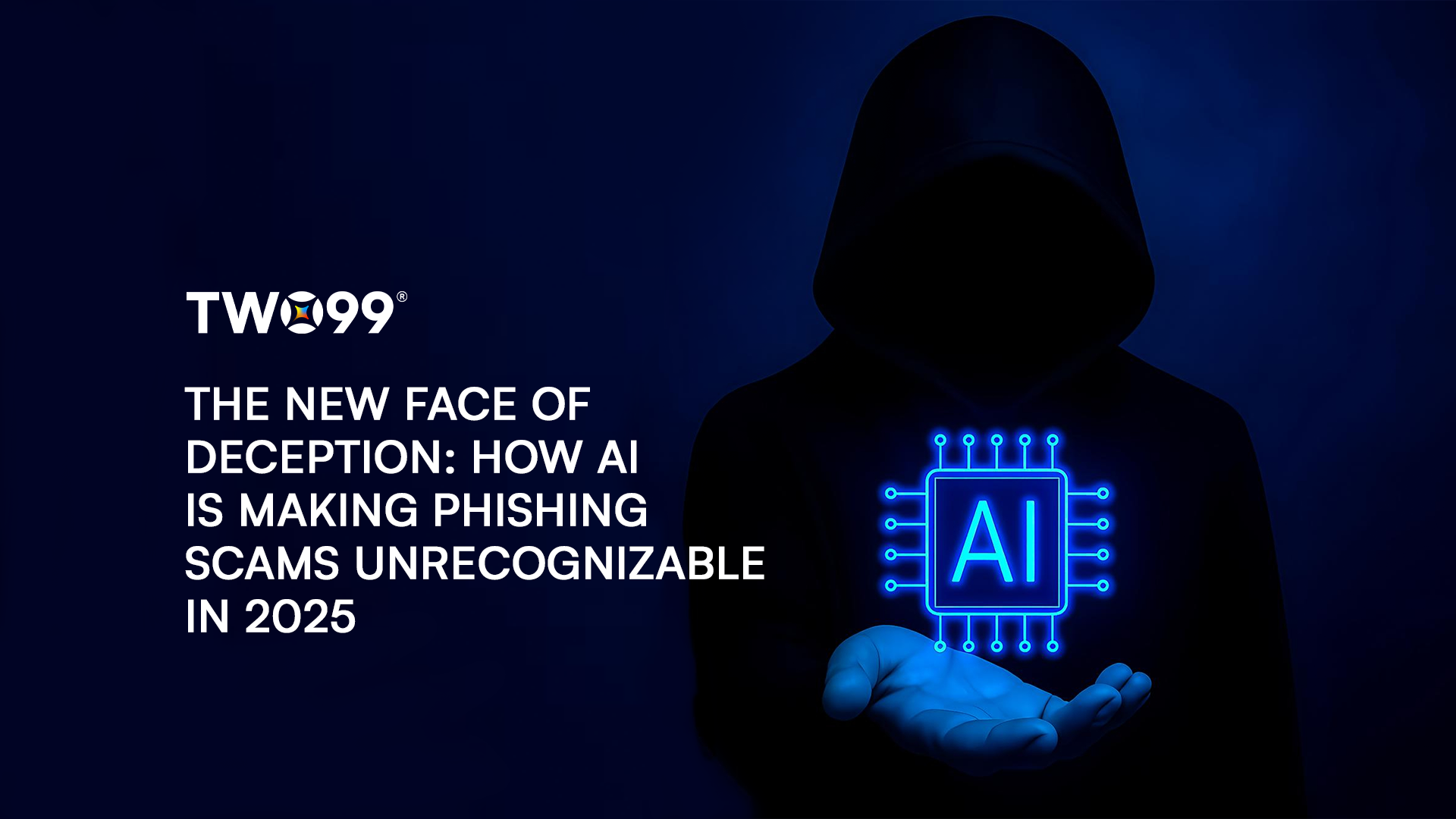Phishing has evolved dramatically in 2025. Gone are the days of obvious scams and broken grammar; today’s attacks are powered by advanced AI, generating emails that look and sound just like legitimate communication. They’re often personalized, context-aware, and sent from addresses that closely mimic trusted sources, making them nearly impossible to spot at a glance.
As AI grows more capable of replicating tone, behavior, and leveraging public data, the line between authentic and fraudulent messages continues to blur. This article explores how AI phishing techniques have advanced, why they’re so convincing, and what organizations must do to defend against this new wave of threats.
What’s Changed in AI-Powered Gmail Phishing Attacks
AI‑driven scams have transcended simple spam filters. AI-powered Gmail phishing attacks now use large language models to mimic corporate tone, understand organizational workflows, and even adapt in real-time to your replies. Systems trained on public emails and corporate communication styles can generate messages that are almost indistinguishable from those written by teammates.
For instance, a recent phishing campaign that hit several mid-size firms used a cloned email signature, matched the formatting of internal emails, and included a natural-sounding excuse for a “delayed invoice.” Thanks to the credible writing and the right sender name, it became easy to overlook, even by vigilant staff.
Security teams are increasingly sounding the alarm about these clever campaigns. A report from cybersecurity firm CyberGuard Labs noted a 200% increase in such attacks in the first half of 2025 alone. And these aren’t random spray attacks—they’re targeted, using employee data scraped from public profiles or leaked breaches.
Why AI‑Driven Phishing Attacks Are So Effective
The secret sauce lies in authenticity. Here’s why AI phishing emails feel genuinely human:
- Personalization is key: Using public data or harvested business intel, AI tailors greetings and references that feel unique to each recipient.
- Flawless tone and grammar: The days of “Dear User, your account is on hold…” are fading. Modern AI crafts messages with polished language, professional phrasing, and appropriate salutations.
- Contextual relevance: By analyzing public emails, social media, or even company announcements, AI can refer to ongoing projects or internal jargon, boosting believability.
- Adaptive interaction: Some tools even allow conversational back-and-forth, adjusting to your replies. A benign “Thank you” may trigger a follow-up asking for sensitive info.
This aligns with the rising concern over why phishing emails generated by AI seem so real. Simply put: they are real until they betray you. You’re not unobservant or careless. The scam is sophisticated.
Anatomy of a 2025 AI Phishing Attack
Let’s dissect a typical flow of an AI phishing attack in 2025:
- Reconnaissance: Crawlers collect data from public emails, social media, and company websites, gathering names, project details, and writing tone.
- Phishing script creation: Using GPT-style models, the attacker crafts an email that echoes the internal communication style.
- Sender spoofing: The “From” address appears legitimate, either spoofed or behind a lookalike domain (e.g., ceo@yourco-official.com).
- Timing strategy: Emails are sent at times when the CEO typically sends memos (early morning local time).
- Follow-up sequences: If ignored, AI triggers a reminder or asks questions to keep the conversation alive.
- Data harvest or malware delivery: The scam concludes by requesting a wire transfer, a login link, or delivering a malicious macro-enabled doc.
Are Your Defenses Ready for AI-Driven Phishing Attacks?
AI-generated threats demand more than traditional security protocols. Here are six measures organizations should implement to stay protected:
- Phishing-Resistant MFA: Use hardware-based keys or biometrics to ensure credentials alone aren’t enough to breach accounts.
- AI-Aware Email Filtering: Adopt tools that analyze language patterns, tone, and behavior—not just sender names and links.
- Contextual Awareness Training: Equip teams to detect subtle shifts in tone, urgency, and formatting that AI attacks often exploit.
- Sender Authentication Protocols: Set up and monitor DMARC, DKIM, and SPF records to prevent spoofed or impersonated email domains.
- Simulated Threat Exercises: Run regular drills that mimic real AI phishing scenarios to build sharper human intuition.
- Agentless, Adaptive Infrastructure: Deploy tools like Binary Wall for predictive threat detection and seamless enterprise integration.
What’s Next on the Horizon?
AI tools are getting more powerful. We’re seeing:
- Deepfake audio follow-ups: “Hey, this is John—can you confirm that transfer?” via AI voice replicas.
- Visual impersonation: Deepfake video calls that use “liveness” prompts to bypass callbacks.
- Insider collusion: AI models trained on actual internal comms, shared via insiders, making attacks virtually seamless.
The cat-and-mouse game is forcing defenders to embrace active defenses—not just firewalls and filters, but adaptive, behavior-based analytics that let anomalies stand out.
The Human Element Still Matters
Despite the rise of machine-crafted deception, humans remain the weak link—and the potential hero. A quick pause, a phone call to confirm, or a second opinion can prevent disaster. It’s not just about automating defenses; it’s about empowering people.
Here’s a best practice checklist to share with your team:
- When you get an unexpected request, especially involving money or data, pick up the phone.
- Stop, look, and verify. Hover over attachments or links. Does the URL match? Is that signature consistent?
- Trust your gut; even subtle language oddities are clues.
- Ask questions. Scammers hate cross-examination.
- Report first, ask questions later. Speed is your ally in containment.
Will You Spot the Fake in Time?
In 2025, AI phishing attacks are no longer amateurish—they’re methodically designed, expertly executed, and increasingly hard to detect. The tools behind them grow smarter every day. But so can we.
Focusing on system-level defenses—multi-layered authentication, AI-enhanced filtering, behavioral monitoring—and empowering humans to pause and verify creates a resilient defense architecture.
The next time an email from your “CEO” sounds just a bit too polished and arrives at an odd time, pause. It might just be us against the machines once again. And a phone call could be the difference between a crisis and a close call.




